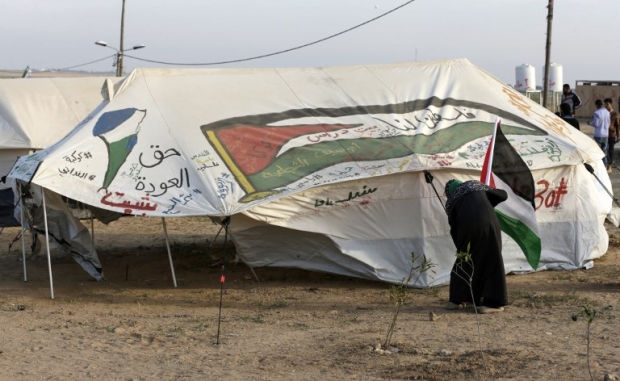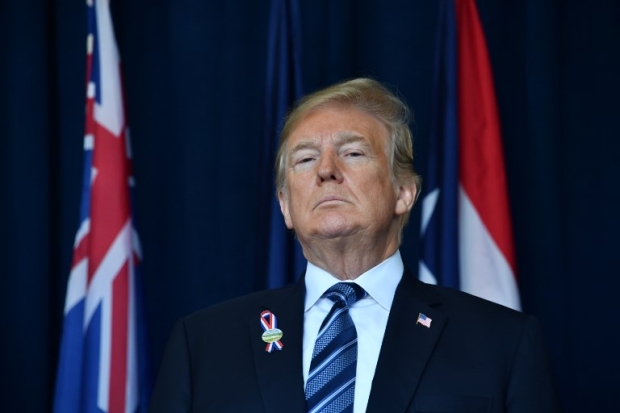As Trump destroys the two-state solution, one state is all that's left

Though US President Donald Trump’s Middle East “deal of the century” hasn’t been publicly announced, elements have dribbled out via leaks in the media and from Palestinian leaders.
In the latest bit of Chinese water torture, Palestinian Authority (PA) President Mahmoud Abbas said that when he met with Trump adviser Jared Kushner and envoy Jason Greenblatt, they asked whether he would consider creating a confederation with Jordan.
Kushner understands that Palestinians and some of their supporters in the Arab world reject his proposals outright, since they offer Palestinians virtually none of what they’ve sought for decades
In doing so, Abbas showed Trump’s hand in terms of what he was offering Palestinians. Though there have been suggestions that the US was proposing a Palestinian “statelet” - with its capital in Abu Dis, a suburb of East Jerusalem - the confederation proposal offers even less. Palestine would not be a state at all, but a subdivision of Jordan.
Any rights or powers it had would derive from what would be offered by King Abdullah II. As the majority of Jordanian citizens are already Palestinian in origin, the king would clearly want to keep a tight rein on this new Palestinian entity. That doesn’t bode well for Palestinians, who expected a state of their own.
Furthering Gaza’s dependence
After Abbas leaked the story, Jordan shot down the proposal. It wanted nothing to do with solving Israel’s problems by relieving it of responsibility for addressing the issue of Palestinian self-determination.
The “beauty” of this proposal from the US-Israel perspective is that they could then turn around and label Gaza as Palestine, killing two birds with one stone. But the proposal would not offer Gaza full statehood: it, too, would be associated in some undefined way with Egypt, rather than being truly independent.
To “sweeten” the offer, the peace plan reportedly calls for building a new airport and seaport - not in Gaza itself, but rather in the Egyptian Sinai. This would further Gaza’s dependence on Egypt, not to mention offering the Egyptian junta another gold mine to rob in its ongoing kleptocratic enterprise.
That’s why Trump recently cancelled a $200m payment to support Palestinians, it's why he is closing the PLO's offices in Washington and it's why he declared the US was ending financial support for UNRWA, the international relief agency supporting Palestinian refugees. This is a deliberate attempt to destroy the main international body founded to tend to the humanitarian needs of around five million Palestinian refugees worldwide.
Right of return
The US has also announced that it rejects the concept of inherited Palestinian refugee status. It does so on behalf of Israel, which seeks to solve the issue of the right of return by magically disappearing millions of Palestinians who are not living survivors of the Nakba, but their descendants. An Israeli report indicated that none other than Prime Minister Benjamin Netanyahu instigated this proposal and sold it to Trump.
Contrary to false claims by Israeli and US leaders, international refugee protocols recognise not only those individuals who themselves were directly expelled from their homes, but also their offspring. In other words, this is an attempt to destroy the decades-old international consensus around refugee status.
Doing so would reduce the number of Palestinian refugees to fewer than 750,000 and thereby solve a major Israeli “problem”. Israel is petrified that the five million Palestinian refugees - or some portion of them - may someday win the right to resettle in their former ancestral homes inside Israel. This, of course, would destroy the concept of a Jewish state, making Israel a majority Palestinian state.
If Israel reduces the number of refugees to less than a million and they are all funnelled to a Palestinian entity in the West Bank or Gaza, this resolves numerous inconveniences for Israel: no more refugees, no more UNRWA, no more right of return.
Failure of US policy
If Trump’s deal of the century fails, as seems likely, it would also herald the failure of the two-state solution, which has been the basis of US policy for decades. That leaves only one viable solution: a single state incorporating all Israelis and Palestinians between Jordan and the Mediterranean Sea.
There is a growing, but still disputed, consensus that a one-state solution is the only remaining plan that can fully resolve the outstanding claims by both parties and bring a measure of justice. But very few, if any, have tried to outline what such a state may look like: How would it be governed, and how would power be shared?
Former Israeli Knesset speaker Avrum Burg recently presented such a proposal in Prospect magazine. In his single-state plan, Israel-Palestine would have a federal level and two cantons - or as he calls them, “nations” - comprised of Palestinians and Jews.
Finally, the top storey will act as a superstructure, joining both parties in a federation to ensure the two peoples can live together peaceably, despite past differences. Coordination and consultation will be necessary to ensure mutual respect, and this federation will be the ultimate enforcer of the constitutional system.
Another single-state model would see a state structured more or less like the current Israeli state: a unitary state where all ethnic and religious groups are represented within a single governing structure. Of course, such a state would be very different than the current one, as Palestinians would likely become the majority. There would be more than one party representing each community, requiring the creation of governing coalitions that cross religious boundaries.
Challenging complacency
Given that many Israeli Jews fear becoming a minority, one understands why Burg proposes a federal/bi-national model. It guarantees a significant level of autonomy to what would become the Jewish minority, and grants them powers to codify their own religious, ethnic, cultural and political protocols. It protects these from encroachment at the federal level; they would maintain their uniqueness and political voice.
Of course, this is still a huge change from the status quo, which most Israelis find tremendously comfortable. It may be hard to imagine what could shake Israel out of such complacency, but remember that citizens of East Germany and the Soviet Union probably felt the same way before their own political systems crumbled.
Nations whose societies are based on profound injustice tend to disintegrate over time, due to the internal tensions and conflict involved in maintaining such contradictions
The only thing that’s certain is that nations whose societies are based on profound injustice tend to disintegrate over time, due to the internal tensions and conflict involved in maintaining such contradictions. When they disintegrate, they don’t dissolve into thin air, but morph into a new form - not necessarily perfect, but presumably more stable and just. The same will happen to Israel eventually.
- Richard Silverstein writes the Tikun Olam blog, devoted to exposing the excesses of the Israeli national security state. His work has appeared in Haaretz, the Forward, the Seattle Times and the Los Angeles Times. He contributed to the essay collection devoted to the 2006 Lebanon war A Time to Speak Out (Verso) and has another essay in the collection Israel and Palestine: Alternate Perspectives on Statehood (Rowman & Littlefield).
The views expressed in this article belong to the author and do not necessarily reflect the editorial policy of Middle East Eye.
Photo: Palestinian schoolchildren chant slogans over a UN flag during a protest against US aid cuts near Hebron in the occupied West Bank on 5 September 2018 (AFP)
Middle East Eye propose une couverture et une analyse indépendantes et incomparables du Moyen-Orient, de l’Afrique du Nord et d’autres régions du monde. Pour en savoir plus sur la reprise de ce contenu et les frais qui s’appliquent, veuillez remplir ce formulaire [en anglais]. Pour en savoir plus sur MEE, cliquez ici [en anglais].







